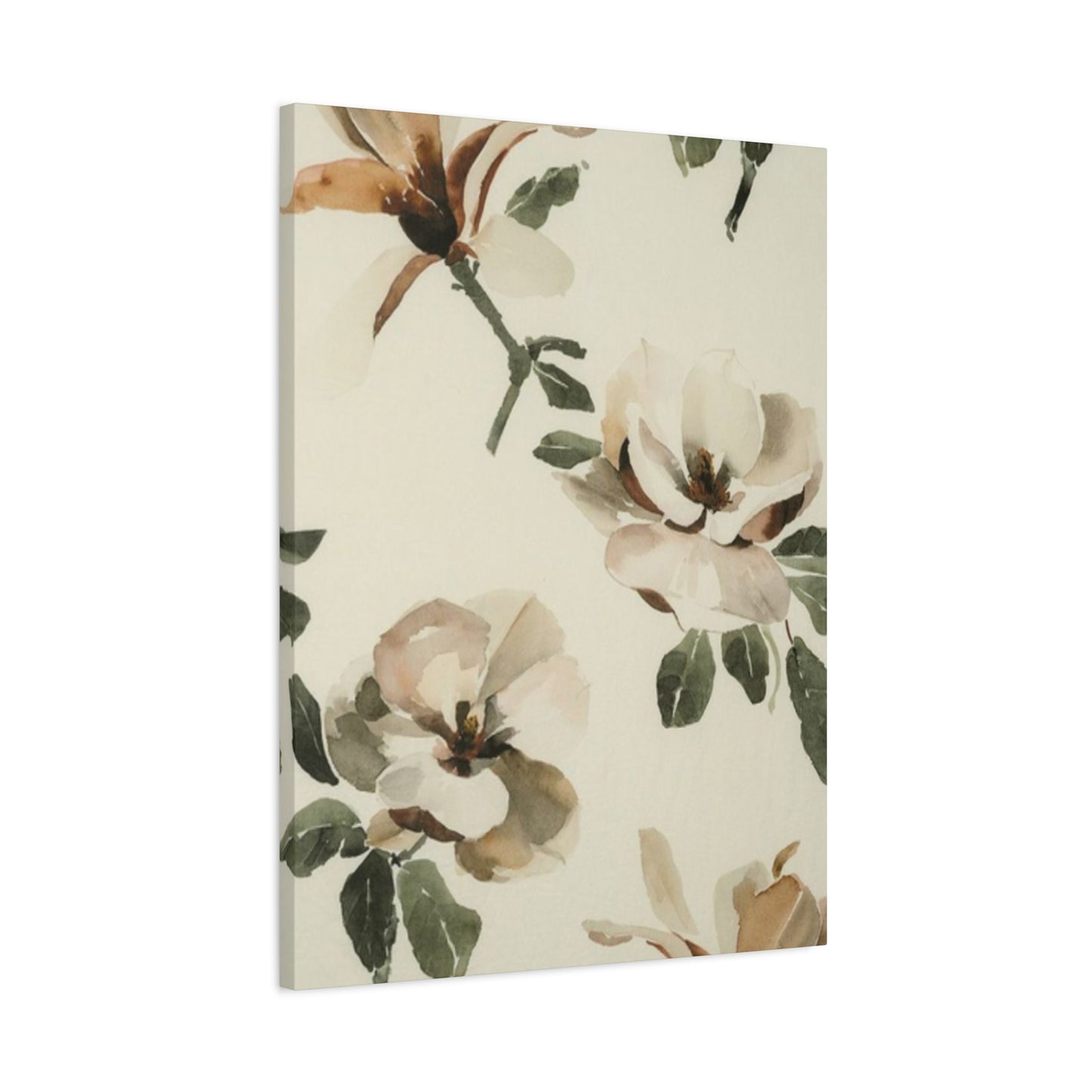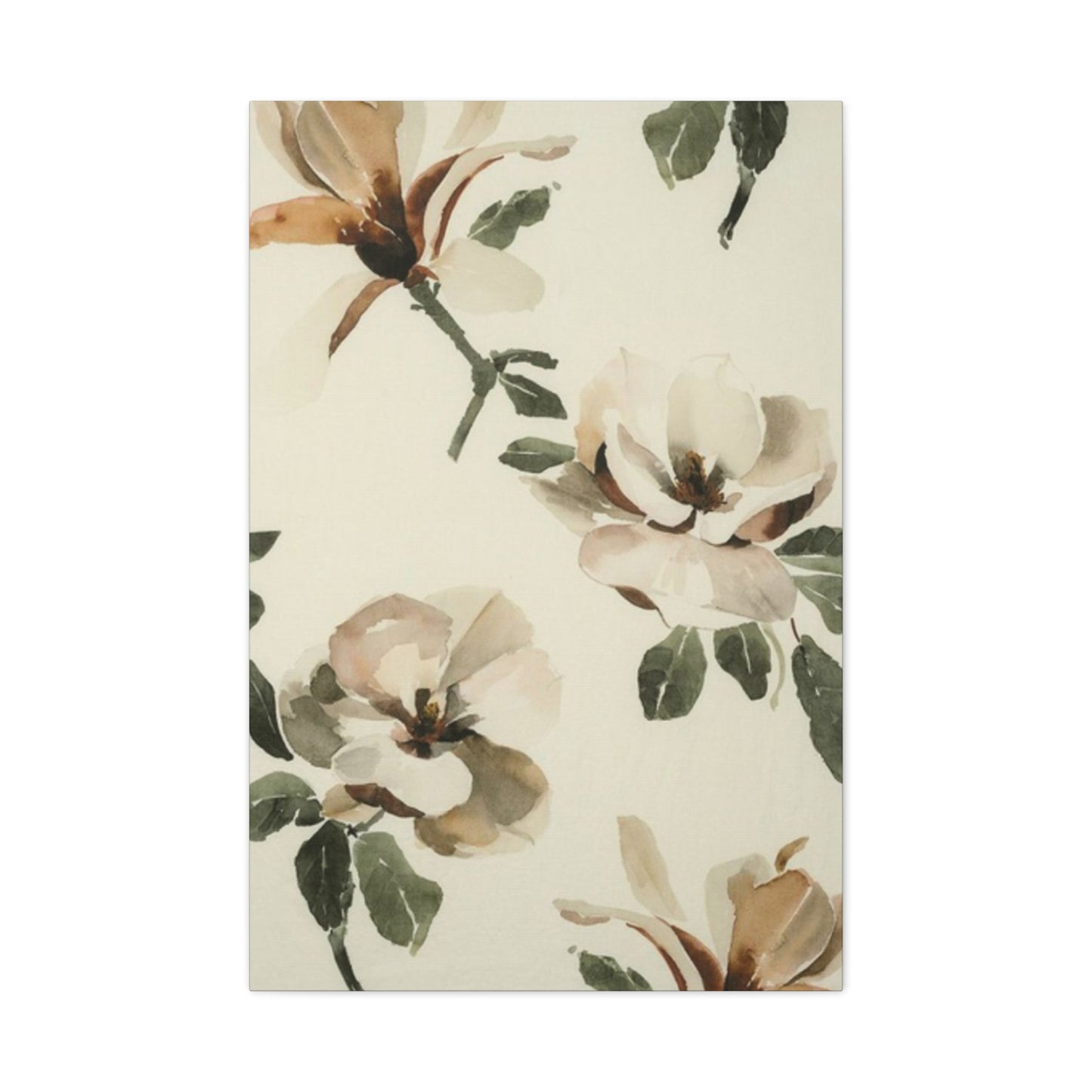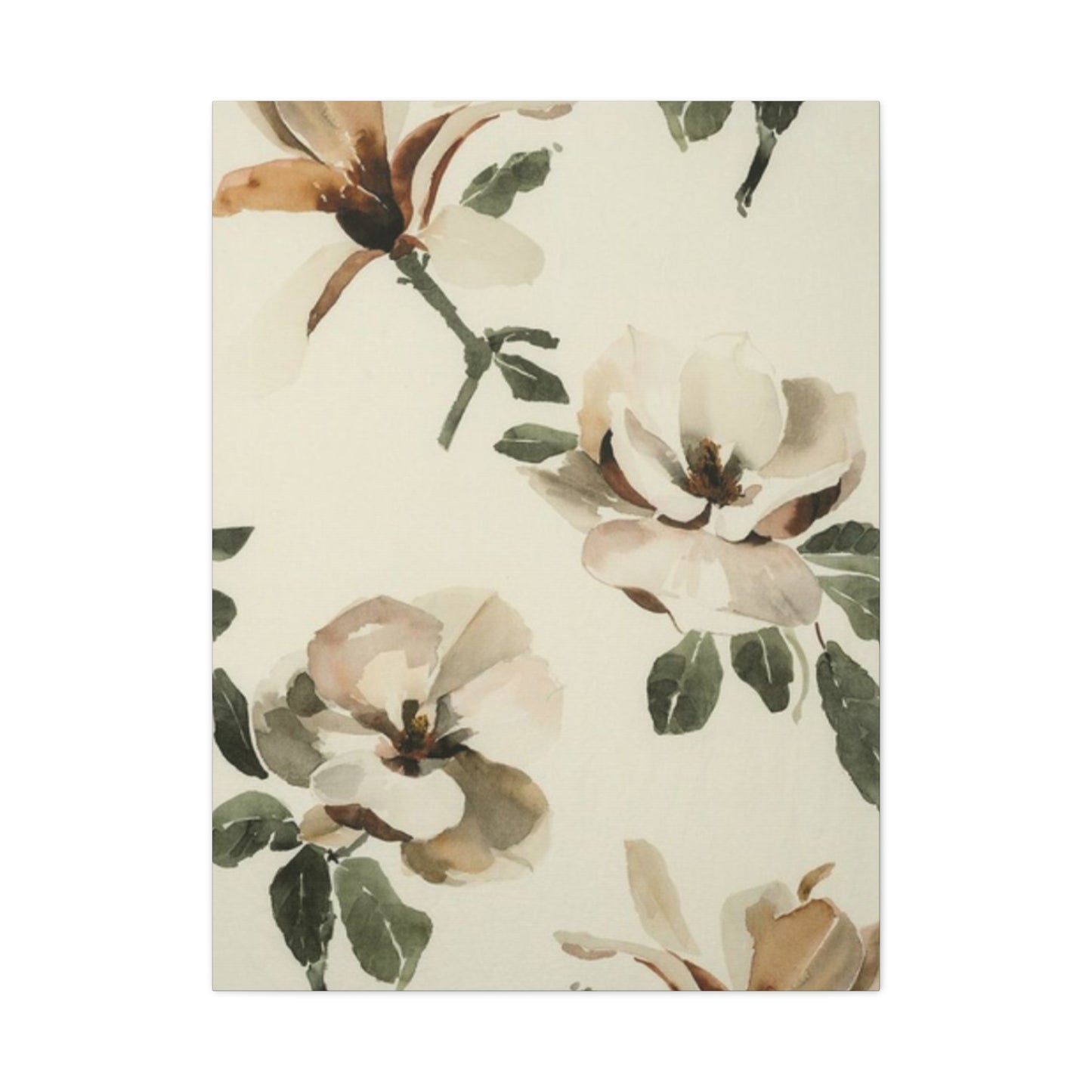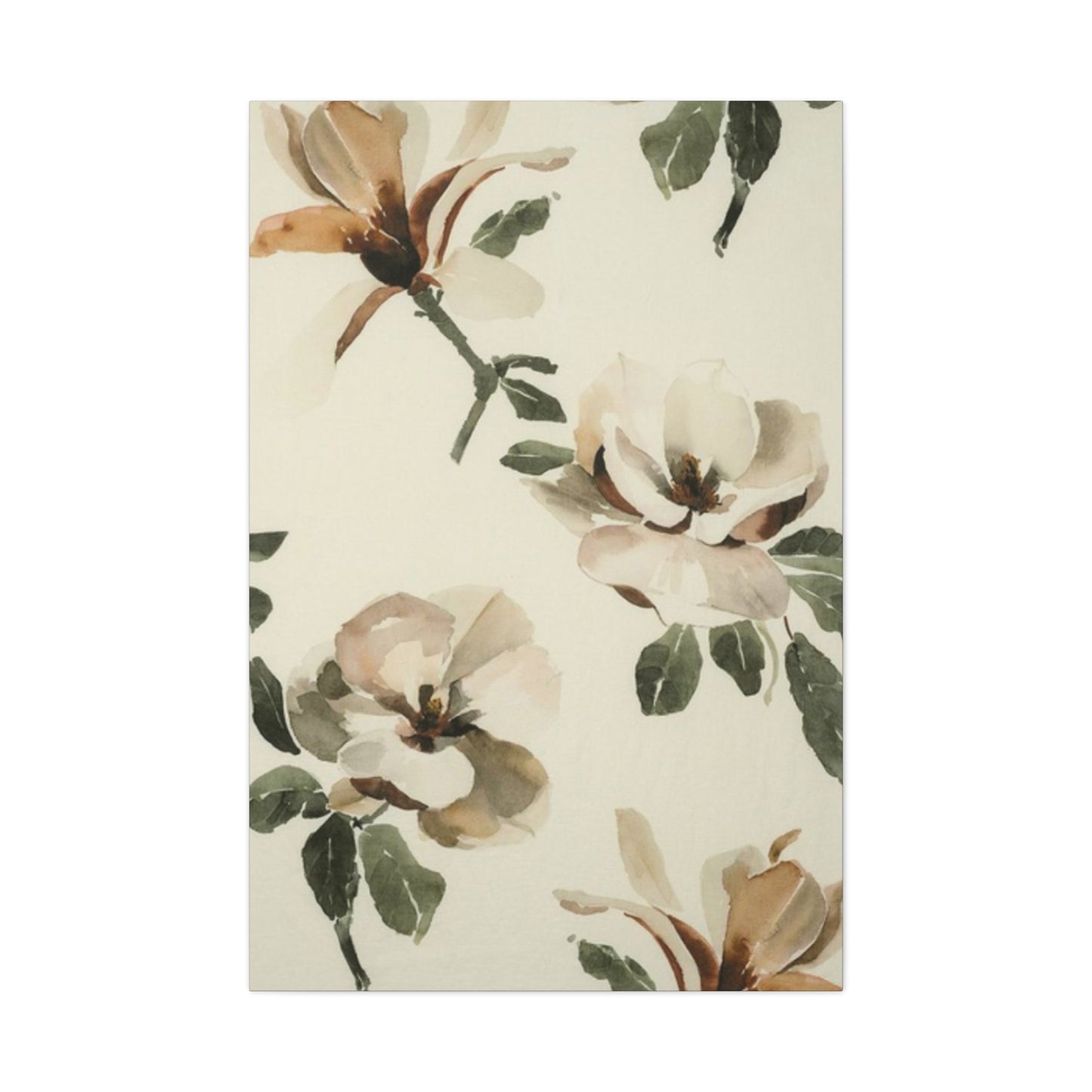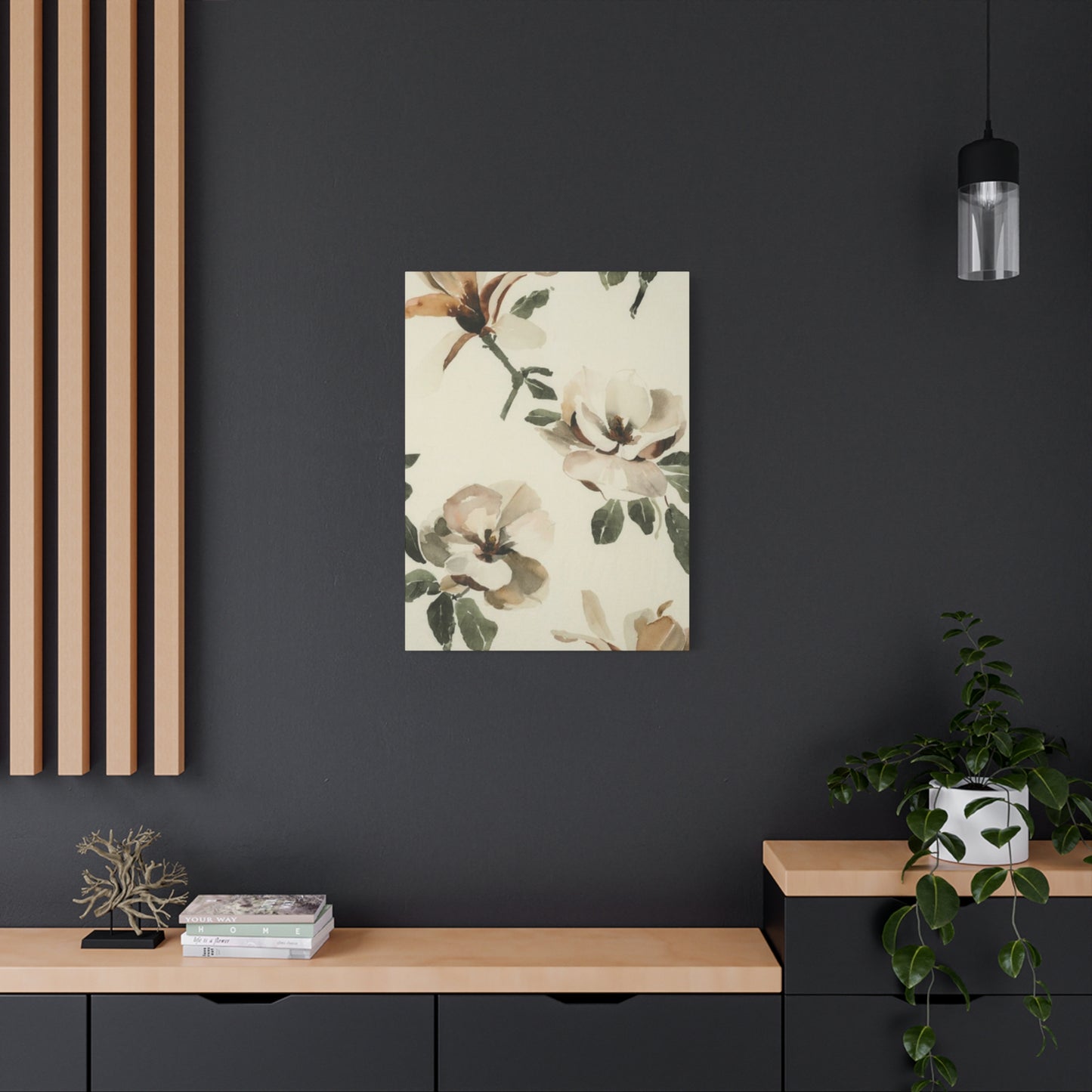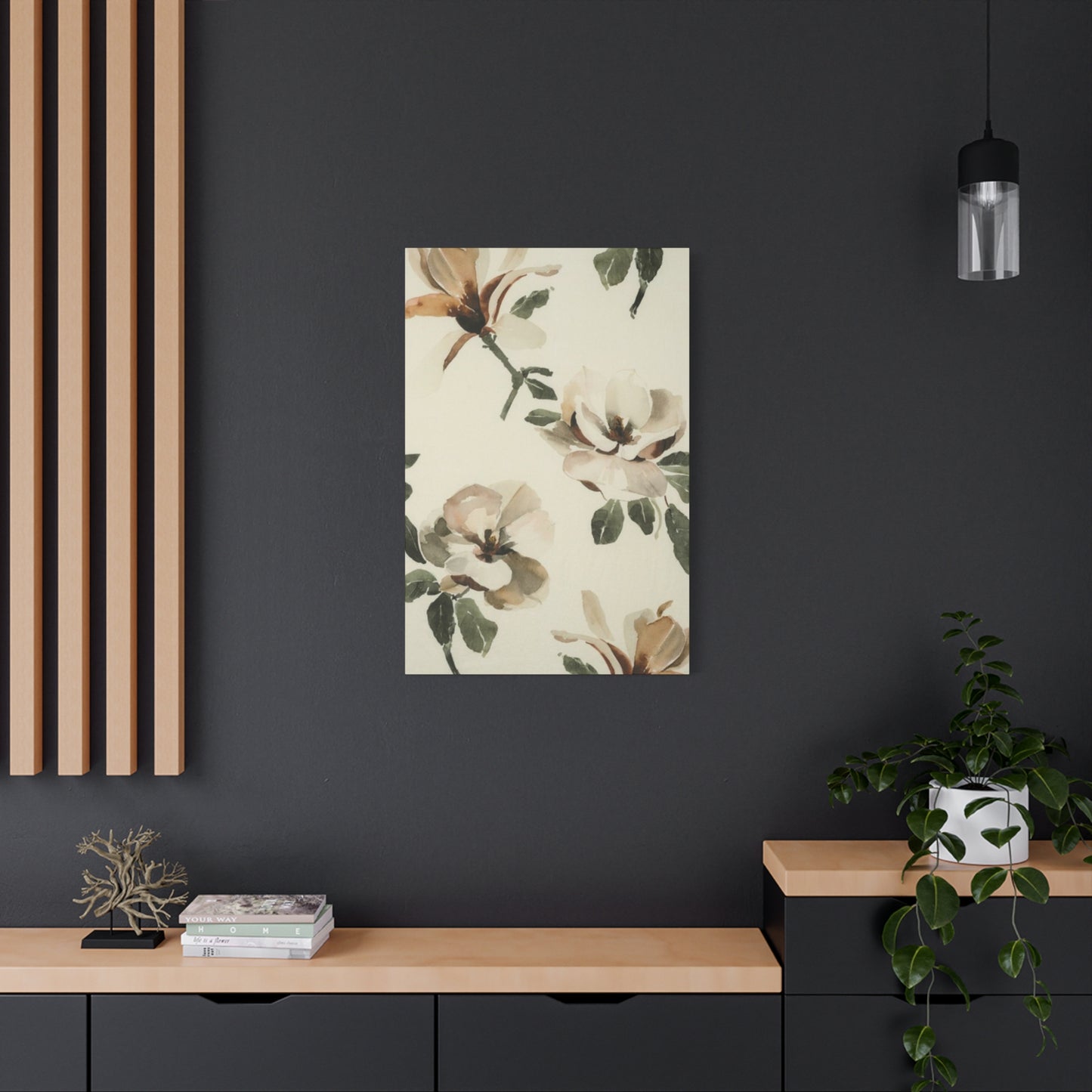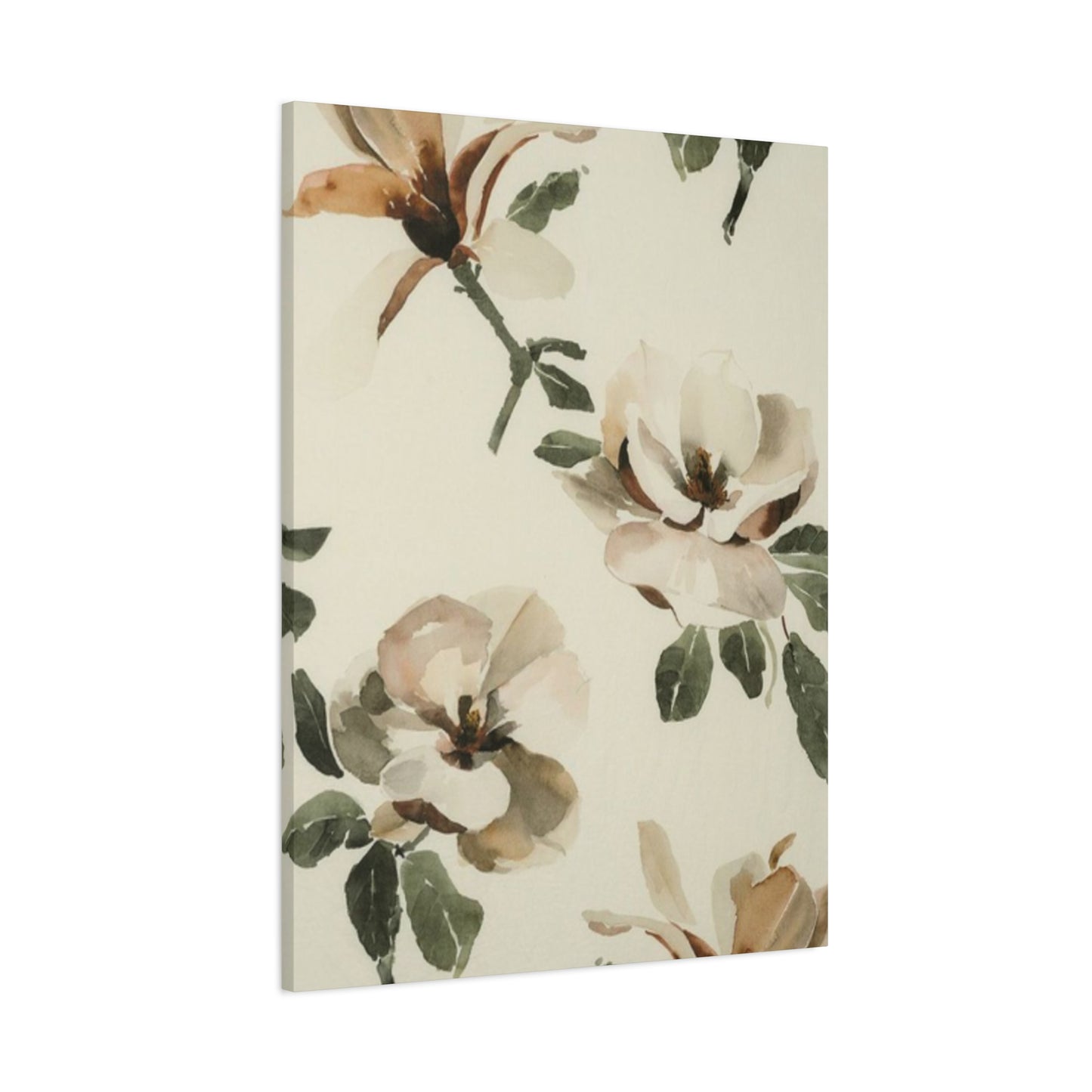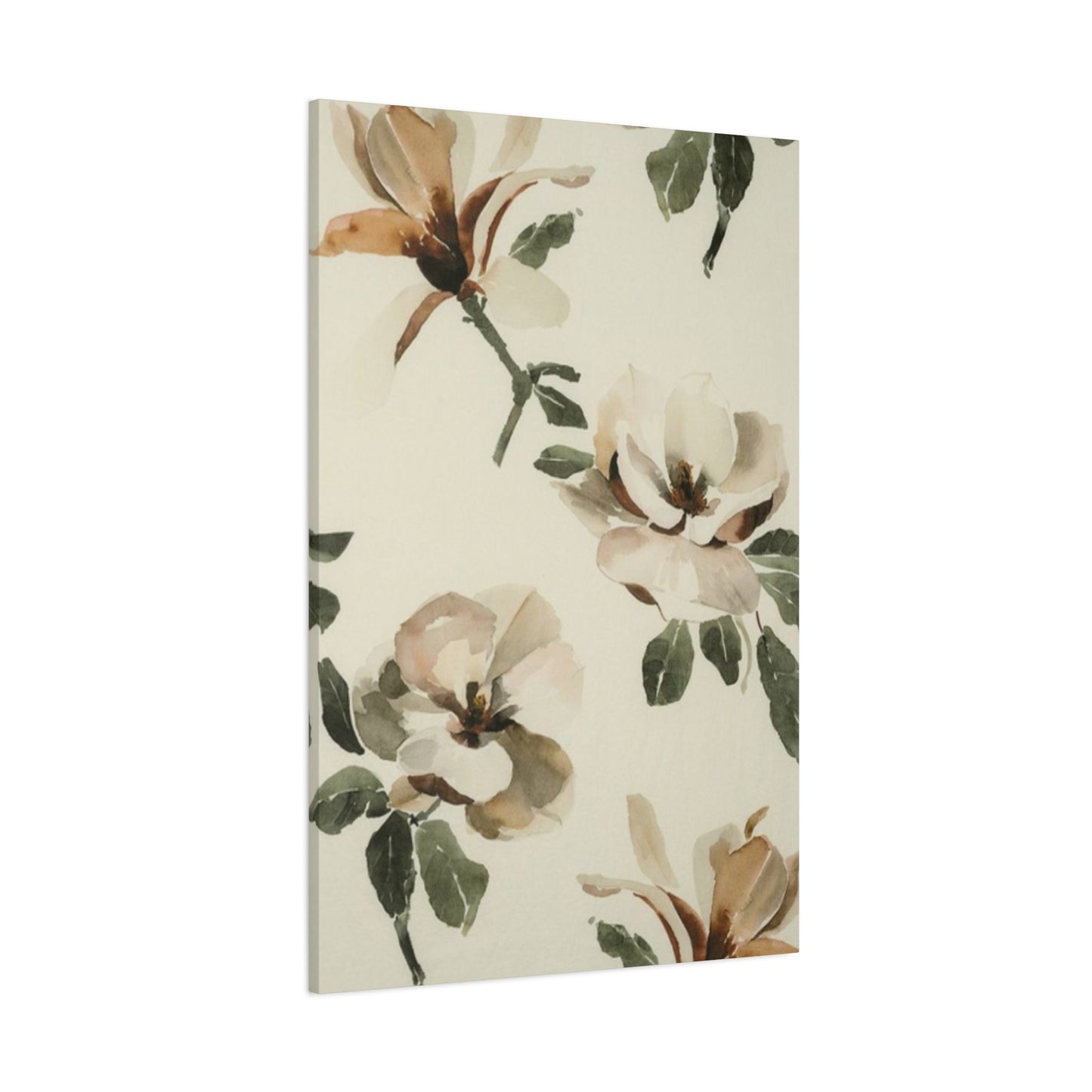White Magnolia Flower Plant Drawing Wall Art: Creating Timeless Botanical Elegance for Your Interior Spaces
The white magnolia flower has captivated artists, botanists, and interior designers for centuries with its pristine petals and graceful form. This magnificent bloom, characterized by its creamy white color and delicate structure, serves as an exceptional subject for plant drawing wall art that brings natural beauty into residential and commercial spaces. The popularity of magnolia-themed artwork continues to grow as homeowners and design professionals recognize the timeless appeal of botanical illustrations that combine scientific accuracy with artistic expression.
Creating or selecting white magnolia flower plant drawing wall art involves understanding both the botanical characteristics of this stunning bloom and the artistic techniques that best capture its essence. Whether rendered in pencil, ink, watercolor, or digital media, magnolia drawings offer a sophisticated aesthetic that complements various interior design styles from contemporary minimalism to classic traditional decor. The clean lines and organic shapes of magnolia flowers provide artists with endless opportunities for interpretation, ranging from highly detailed botanical studies to simplified line drawings that emphasize form and movement.
The enduring appeal of magnolia flower artwork lies in its ability to evoke feelings of serenity, purity, and natural elegance. These drawings can transform blank walls into focal points that draw the eye and create conversation, while their neutral color palette ensures they integrate seamlessly with existing color schemes. For collectors and art enthusiasts, original magnolia drawings represent both aesthetic value and potential investment, particularly when created by established botanical artists or emerging talents in the field.
Botanical Characteristics That Make Magnolia Flowers Ideal Drawing Subjects
The white magnolia possesses distinctive botanical features that make it exceptionally well-suited for artistic representation. The flower typically consists of six to twelve tepals, which are petal-like structures that blur the distinction between petals and sepals. These tepals arrange themselves in an elegant spiral pattern, creating a cup-shaped or star-shaped bloom depending on the degree of opening. The waxy texture of magnolia petals reflects light in unique ways, presenting artists with interesting challenges in rendering surface quality and dimensional form.
Magnolia flowers bloom before the leaves emerge on many species, creating dramatic visual compositions where the pure white blossoms stand out against bare branches or early spring skies. This characteristic provides artists with opportunities to create minimalist compositions that emphasize the flower's form without the distraction of foliage. The large size of magnolia blooms, which can reach eight to twelve inches in diameter in some species, allows for detailed study of individual flowers and creates impressive visual impact when reproduced at actual size or larger scales in wall art.
The structural complexity of magnolia flowers offers multiple perspectives for artistic interpretation. From the tightly furled bud stage through full bloom to the beginning of petal fall, each phase presents distinct visual characteristics. The prominent central cone containing the flower's reproductive structures adds architectural interest to compositions, while the thick, fleshy stems provide strong linear elements that anchor designs. These varied features enable artists to create diverse works ranging from close-up studies focusing on petal texture to wider compositions showing multiple blooms at different developmental stages.
The symbolic associations of white magnolia flowers add depth to their visual appeal. Across cultures, magnolias represent purity, nobility, perseverance, and dignity. In Asian traditions, particularly Chinese and Japanese culture, magnolias symbolize feminine beauty and gentleness. These rich symbolic meanings enhance the emotional resonance of magnolia artwork, allowing viewers to connect with pieces on multiple levels beyond pure aesthetic appreciation. Artists who understand these cultural associations can create works that communicate specific themes or moods through their treatment of the subject.
Traditional Drawing Techniques for Capturing Magnolia Flowers
Pencil drawing remains one of the most popular and accessible techniques for rendering white magnolia flowers. Artists working in graphite can achieve remarkable tonal range from deepest shadow to brilliant highlight, essential for depicting the subtle gradations across white petals. The key to successful pencil rendering lies in building values gradually through multiple layers, beginning with light strokes to establish overall form before progressively darkening shadows and mid-tones. This approach allows for corrections and adjustments throughout the process, making pencil an forgiving medium for both beginners and experienced artists.
Different pencil grades serve specific functions in magnolia drawings. Hard pencils in the H range create fine, light lines ideal for initial sketches and delicate details like petal veins. Medium pencils around HB provide versatility for general shading and texture work. Soft pencils in the B range deliver rich, dark values necessary for deep shadows and dramatic contrast. Professional botanical artists often use a range of six to eight different pencil grades in a single drawing, selecting each based on the specific effect required for different areas of the composition.
Charcoal offers an alternative approach that emphasizes bold values and expressive mark-making. White magnolias rendered in charcoal possess a dramatic quality quite different from the refined precision of pencil work. Vine charcoal allows for soft, atmospheric effects and easy erasure, while compressed charcoal provides intense blacks for maximum contrast. Artists working with charcoal often employ white chalk or white charcoal on toned paper to create highlights, building a complete value structure from middle gray rather than starting with white paper. This technique particularly suits larger-scale drawings where gestural qualities enhance rather than detract from botanical accuracy.
Ink drawing techniques bring their own distinctive character to magnolia artwork. Traditional pen and ink work relies on line quality, cross-hatching, and stippling to build form and suggest volume without the continuous tones possible in pencil or charcoal. The permanence of ink demands confidence and planning, as errors cannot be easily corrected. However, this limitation often results in drawings with exceptional clarity and graphic strength. Modern artists may combine traditional dip pens with technical pens of various nib sizes, creating varied line weights that direct the viewer's eye and emphasize important compositional elements.
Watercolor Approaches to Magnolia Flower Illustrations
Watercolor painting offers unique advantages for depicting white magnolia flowers, particularly in capturing the luminous quality of the petals. The transparent nature of watercolor allows artists to build subtle color variations while preserving the inherent brightness of the white paper, which serves as the lightest value in the composition. This technique requires careful planning, as watercolor works from light to dark and transparent to opaque, with the white of the paper representing the brightest areas of white petals.
The wet-on-wet technique produces soft, diffused effects ideal for suggesting the velvety texture of magnolia petals and creating atmospheric backgrounds. By applying paint to previously moistened paper, artists achieve gentle color transitions and organic blending that mimics the subtle color shifts across petal surfaces where white may shift to cream or take on reflected colors from surrounding elements. This approach works particularly well for creating soft shadows and suggesting the rounded forms of magnolia flowers without hard edges or obvious brushstrokes.
Conversely, wet-on-dry technique allows for precise control and sharp edges necessary for defining petal outlines and creating detailed botanical accuracy. Artists alternate between wet-on-wet and wet-on-dry approaches throughout a single painting, using fluid techniques for soft passages and controlled application for areas requiring definition. The strategic use of masking fluid protects the brightest whites during initial washes, allowing artists to work freely on backgrounds and shadow areas without worrying about preserving highlight regions.
Color mixing for white magnolia paintings requires understanding how to create realistic whites and shadows. Pure white paper represents the brightest highlights, while shadows on white petals typically contain subtle combinations of cool and warm grays mixed from complementary colors rather than black. Artists often use combinations of ultramarine blue with burnt sienna or raw umber to create naturalistic gray tones that suggest dimension without appearing muddy or dull. Reflected light from green foliage or blue sky may introduce subtle color notes into shadow areas, adding vibrancy and realism to the rendering.
Contemporary Digital Art Methods for Magnolia Drawings
Digital illustration has revolutionized botanical art creation, offering artists unprecedented control and flexibility in rendering white magnolia flowers. Software applications designed for digital painting provide tools that simulate traditional media while adding capabilities impossible with physical materials. Artists can work in layers, separating different elements of a composition for independent adjustment. This non-destructive workflow allows for experimentation without fear of ruining hours of work, as changes remain reversible throughout the creative process.
Pressure-sensitive styluses and drawing tablets enable natural, intuitive mark-making that closely resembles traditional drawing and painting. Modern devices detect thousands of pressure levels and tilt angles, translating physical gestures into corresponding digital marks with remarkable fidelity. Artists who have spent years developing traditional skills can transition to digital media while retaining their personal touch and drawing style. The immediate feedback provided by digital tools also accelerates learning for beginners, who can instantly undo mistakes and retry techniques until achieving desired results.
Digital brushes specifically designed for botanical illustration replicate the effects of graphite, charcoal, ink, and watercolor while offering advantages unique to digital media. Texture brushes can suggest petal surface qualities with efficiency impossible in traditional media. Custom brushes created by scanning actual botanical elements or textures allow artists to incorporate realistic details throughout compositions. The ability to adjust brush size, opacity, and flow dynamically throughout the drawing process provides unprecedented control over mark-making and value relationships.
Vector-based illustration programs offer alternative approaches particularly suited to graphic, stylized interpretations of magnolia flowers. Unlike raster-based digital painting, vector graphics use mathematical formulas to define shapes, resulting in infinitely scalable artwork that maintains perfect clarity at any size. This characteristic makes vector illustrations ideal for applications requiring multiple sizes, from small greeting cards to large-scale wall murals. The clean, geometric aesthetic of vector art appeals to contemporary design sensibilities and integrates seamlessly with modern interior spaces.
Composition Principles for Magnolia Flower Wall Art
Successful magnolia flower wall art requires thoughtful composition that guides the viewer's eye and creates visual interest beyond mere representation. The rule of thirds, a foundational compositional principle, suggests placing important elements at intersections of lines dividing the image into thirds both horizontally and vertically. Positioning the central magnolia bloom or key compositional elements at these power points creates dynamic, engaging artwork rather than static, centered arrangements that lack visual energy.
Balance in composition can be either symmetrical or asymmetrical, each creating different effects. Symmetrical compositions with centrally placed magnolia flowers convey formality, stability, and calm, appropriate for traditional interiors and spaces where serenity is paramount. Asymmetrical compositions create movement and visual interest by balancing elements of different sizes and visual weights across the picture plane. A large magnolia bloom on one side might be balanced by smaller buds and foliage on the opposite side, creating equilibrium without mirror-image repetition.
Leading lines direct viewer attention through the composition, often using stems, branches, or the curves of petals to create pathways for the eye to follow. Strong diagonal lines add energy and dynamism to compositions, while horizontal lines suggest stability and calm. Vertical elements create feelings of growth and aspiration. Skilled artists combine multiple directional forces, using the natural forms of magnolia flowers and branches to create compositional structures that feel organic rather than artificially imposed.
Negative space, the empty areas surrounding the main subject, plays a crucial role in magnolia flower compositions. Generous negative space creates breathing room and emphasizes the elegance of individual blooms, particularly effective in minimalist or contemporary designs. The relationship between positive and negative space should be carefully considered, with negative areas shaped deliberately rather than treated as mere background. In Japanese-influenced compositions, negative space becomes an active element equivalent in importance to the flowers themselves, suggesting limitless depth and inviting contemplation.
Creating Series and Collections of Magnolia Artwork
Developing a series of magnolia flower drawings rather than single standalone pieces offers numerous advantages for both artists and collectors. A cohesive series exploring different aspects of magnolia flowers provides viewers with multiple entry points into the subject while demonstrating the artist's sustained engagement and thorough understanding. Series might focus on various magnolia species, different stages of bloom, seasonal changes, or diverse artistic approaches to the same subject, creating thematic unity with visual variety.
Botanical progression series document the lifecycle of magnolia flowers from tight bud through full bloom to petal fall and seed pod formation. These sequential studies possess both scientific and aesthetic value, showing the transformation of form across time. Displayed together, lifecycle series create narrative arcs that engage viewers and provide educational content alongside visual pleasure. Individual pieces from such series can stand alone while maintaining their connection to the larger whole, offering collectors flexibility in display options.
Variations in artistic approach within a series demonstrate versatility while maintaining subject consistency. A series might include a detailed botanical study, a loose gestural interpretation, a high-contrast graphic version, and a delicate watercolor rendering of the same magnolia variety. This approach showcases diverse technical skills while allowing viewers to compare how different media and techniques influence the perception of identical subject matter. Such series appeal to collectors interested in artistic process and the translation of natural forms into various visual languages.
Size and format consistency across series creates professional presentation and simplifies installation. A collection of four to six magnolia drawings in identical dimensions and frames installs easily in grid arrangements or linear sequences, creating impressive visual impact through repetition and subtle variation. Alternatively, intentional size variation within series creates rhythm and hierarchy, with larger pieces serving as focal points supported by smaller satellite works that elaborate on details or present alternative perspectives.
Materials and Surfaces for Drawing Magnolia Flowers
Paper selection profoundly influences the final appearance and longevity of magnolia flower drawings. Hot-pressed papers with smooth surfaces suit detailed botanical work requiring fine lines and precise rendering. The lack of texture allows for controlled mark-making and crisp edges ideal for highly realistic representations. Cold-pressed papers with moderate texture provide tooth that grabs drawing media, excellent for building gradual tonal transitions and creating interest in larger areas. Rough papers with pronounced texture create dramatic effects as media settles into valleys and skips across peaks, producing broken lines and stippled areas that can effectively suggest natural textures.
Weight and archival quality ensure the longevity and structural integrity of botanical drawings. Papers under 140 pounds may buckle when subjected to wet media or aging, while heavier papers from 140 to 300 pounds remain flat and resist warping. Acid-free, archival-quality papers prevent yellowing and degradation that compromise both appearance and value over time. Cotton rag papers offer superior longevity and work beautifully for artwork intended as heirloom pieces or investment purchases, while wood pulp papers provide economical alternatives for studies and practice work.
Drawing media selection depends on desired effects and personal preferences developed through experimentation. High-quality graphite pencils from professional manufacturers provide consistent performance and lightfast pigments that resist fading. Artist-grade charcoal offers rich blacks and expressive possibilities unavailable with graphite. Archival ink pens with fade-resistant, waterproof ink ensure permanence, particularly important for work intended for sale or long-term display. Watercolor paints in professional grades contain higher pigment concentrations and better lightfastness ratings than student grades, justifying their higher cost for serious work.
Additional tools enhance drawing capabilities and efficiency. Kneaded erasers lift pigment without damaging paper surfaces, while vinyl erasers remove marks more aggressively for corrections. Tortillons and blending stumps smooth transitions in graphite and charcoal work. Fixative sprays protect finished drawings from smudging and environmental damage. Lightboxes facilitate tracing and transferring preliminary drawings to final surfaces. Quality brush sets in various sizes extend capabilities for artists working with wet media, while palette knives and sponges create special effects in mixed media approaches.
Lighting Techniques for Displaying Magnolia Wall Art
Proper lighting dramatically enhances the viewing experience of magnolia flower wall art while protecting artwork from damage. Natural lighting provides beautiful illumination but requires careful management to prevent fading and deterioration. Direct sunlight should never fall on artwork containing light-sensitive media like watercolor, colored pencil, or fugitive inks. North-facing walls in the Northern Hemisphere receive soft, indirect natural light throughout the day without direct sun exposure, making them ideal locations for displaying valuable botanical artwork.
Artificial lighting offers controlled illumination customizable to specific artwork and viewing conditions. Picture lights mounted directly on frames or adjacent walls provide focused illumination that highlights artwork while creating ambient lighting in rooms. LED picture lights offer advantages over traditional incandescent or halogen options, generating minimal heat that could damage artwork while consuming less energy and lasting significantly longer. Adjustable picture lights allow fine-tuning of beam spread and intensity to optimize illumination for specific pieces.
Track lighting systems provide flexible options for illuminating wall art in galleries or rooms with multiple artworks. Individual fixtures can be positioned and aimed to properly light each piece while accommodating different sizes and arrangements. Modern LED track lighting with adjustable color temperature allows customization of light quality to complement specific artworks. Cooler color temperatures around 4000K provide clean, neutral illumination, while warmer temperatures around 3000K create cozy, intimate viewing conditions.
Ambient room lighting contributes to the overall viewing experience even when not directly illuminating artwork. Layered lighting design incorporating ambient, task, and accent lighting creates flexible environments where magnolia wall art can be appreciated under various conditions. Dimmer controls allow adjustment of lighting levels for different times of day and activities. Smart lighting systems programmable through apps or voice commands offer ultimate flexibility, enabling preset lighting scenes optimized for art viewing or alternative room uses.
Preservation and Conservation of Botanical Drawings
Environmental control protects magnolia flower drawings from deterioration and maintains their appearance for future generations. Temperature stability prevents expansion and contraction of paper fibers that cause warping and structural damage. Ideal temperature ranges between 65 and 70 degrees Fahrenheit minimize stress on paper and media. Relative humidity between 45 and 55 percent prevents problems associated with both excess moisture and extreme dryness. Dehumidifiers manage humid conditions while humidifiers address overly dry environments, with monitoring devices tracking conditions to ensure consistency.
Protection from light exposure preserves light-sensitive media and prevents fading or color shifts. UV-filtering glazing blocks harmful ultraviolet radiation while allowing visible light transmission for viewing. Museum-grade acrylic glazing offers excellent UV protection along with shatter resistance and light weight advantages over glass. Conservation glass provides similar UV protection with the premium clarity and scratch resistance of mineral glass. Both options significantly reduce light damage while maintaining excellent viewing quality, justifying their higher cost for valuable or irreplaceable artwork.
Proper framing creates microenvironments protecting artwork from environmental pollutants and physical damage. Conservation mounting techniques avoid adhesives that might damage paper or introduce chemicals causing deterioration. Archival backing boards provide structural support while preventing acid transfer from frame backs and walls. Dust covers seal frame backs, excluding insects, dust, and environmental contaminants. Hanging hardware appropriate for artwork weight ensures secure mounting preventing falls or structural stress.
Regular inspection and maintenance preserve condition and identify problems requiring professional intervention. Annual examinations check for signs of foxing, mold growth, insect damage, or media deterioration. Cleaning frame exteriors removes accumulated dust without disturbing sealed frame interiors. Professional conservators should address any problems discovered during inspections, as improper treatment can cause irreversible damage. Documentation through photography creates records showing condition at specific times, valuable for insurance purposes and tracking any changes requiring attention.
Pricing and Market Considerations for Magnolia Art
Pricing original magnolia flower drawings requires balancing multiple factors including creation time, materials costs, artist reputation, artwork size, and market conditions. Emerging artists typically price work modestly to build client bases and establish market presence, while established artists with exhibition histories and collector followings command premium prices reflecting their reputations and proven market demand. Time investment including preliminary studies, actual drawing time, and finishing processes must be compensated at rates reflecting skill levels and opportunity costs.
Materials costs include papers, drawing media, frames, glazing, and other presentation elements, which should be fully recovered plus markup in final pricing. High-quality archival materials command prices reflecting their superior performance and longevity. Custom framing represents significant investment that should be reflected in prices for framed artwork. Artists selling unframed work price accordingly, with framing options offered separately or recommended framing specifications provided to buyers.
Size relationships influence pricing structures with larger works generally commanding higher prices reflecting increased materials costs and extended creation time. However, pricing should not simply scale linearly with size, as complexity, detail level, and artistic achievement factor into value assessments. A small, exquisitely detailed magnolia drawing might appropriately price higher than a larger but simpler work. Market research examining comparable works by artists at similar career stages provides realistic pricing guidance.
Multiple pricing tiers accommodate different buyers while maximizing revenue potential. Original drawings command highest prices reflecting their unique, irreplaceable nature. Limited edition prints made from original drawings offer more accessible price points while maintaining quality and exclusivity through restricted production numbers. Open edition prints provide affordable options for broader audiences. Digital downloads represent the most accessible tier, allowing purchasers to print at their own expense. This tiered approach serves diverse market segments without devaluing original works.
Display Strategies for Different Interior Styles
Contemporary interiors characterized by clean lines, neutral palettes, and minimalist aesthetics provide ideal settings for elegant magnolia flower drawings. Single large-scale pieces command attention without cluttering spaces, while their organic forms soften angular architectural elements. Black and white or monochromatic magnolia drawings complement the restrained color schemes typical of contemporary design. Frameless or slim metal frames maintain the streamlined aesthetic while properly protecting and presenting artwork. Positioning artwork with generous surrounding space emphasizes its importance while maintaining the uncluttered appearance essential to contemporary style.
Traditional interiors featuring rich woods, classic proportions, and established design elements welcome detailed botanical drawings presented in substantial wood frames. Magnolia artwork fits naturally into traditional settings where nature-inspired themes and formal symmetry create refined atmospheres. Coordinating frame finishes with other wood elements in rooms creates cohesive design schemes, while classical matting approaches with multiple borders add formality. Symmetrical arrangements of paired magnolia drawings flanking architectural features like fireplaces or doorways reinforce traditional design principles.
Transitional interiors blending contemporary and traditional elements benefit from magnolia artwork that bridges both aesthetics. Medium-scale drawings with moderate detail levels and versatile framing choices work throughout transitional spaces. Neutral color palettes in both artwork and frames coordinate with furnishings combining modern and traditional pieces. Flexible arrangement options allow magnolia drawings to integrate into gallery walls mixing diverse artwork types or stand as solo focal points depending on specific room designs and personal preferences.
Bohemian and eclectic interiors celebrating personal expression and diverse influences incorporate magnolia drawings as elements within richly layered environments. Mixing botanical artwork with varied styles, periods, and media creates visually interesting collections reflecting broad tastes. Unconventional framing choices including painted frames, found object frames, or no frames at all suit bohemian sensibilities. Asymmetrical arrangements and unexpected placement locations like corners, stairwells, or unconventional heights add whimsy while maintaining appreciation for the artwork itself.
Regional Magnolia Species and Their Artistic Interpretation
Southern magnolia, native to southeastern United States, represents the species most commonly associated with the American South. Its large, glossy evergreen leaves and substantial white flowers create dramatic compositions blending architectural foliage with soft blooms. Artists depicting southern magnolia capture its aristocratic presence and cultural associations with antebellum architecture and southern landscapes. The contrast between dark green foliage and pure white flowers provides strong graphic possibilities, while the thick, leathery texture of both leaves and petals challenges artists to convey surface qualities convincingly.
Star magnolia, among the earliest flowering varieties, produces delicate white flowers with numerous narrow petals creating star-shaped blooms. The smaller scale and more numerous flowers of this species suit compositions showing multiple blooms along branches, creating rhythm and pattern opportunities. The early blooming habit means star magnolia flowers often appear against bare branches or snow, offering dramatic seasonal imagery. Artists drawn to delicate, detailed work find star magnolia's intricate petal arrangements rewarding subjects showcasing technical skills.
Saucer magnolia produces large, tulip-shaped flowers in white often flushed with pink or purple at petal bases. While not purely white, varieties leaning heavily toward white with minimal color offer opportunities for subtle color work within predominantly white compositions. The robust, sculptural quality of saucer magnolia blooms creates strong forms ideal for bold, graphic interpretations. The goblet shape of flowers provides interesting perspective challenges and opportunities for exploring interior spaces of blooms.
Japanese magnolia species including Magnolia kobus and Magnolia stellata possess refined elegance reflecting Japanese aesthetic principles. These species inspire artwork emphasizing simplicity, negative space, and the subtle beauty of minimal elements. The influence of Japanese brush painting traditions informs artistic approaches to these varieties, with emphasis on confident brushwork, asymmetrical balance, and integration of empty space as active compositional element. Contemporary artists drawing from both Eastern and Western traditions create fusion approaches honoring multiple cultural perspectives.
Marketing and Selling Magnolia Flower Wall Art
Online marketplaces provide accessible platforms for artists selling magnolia flower drawings to global audiences. Artist-focused platforms specifically designed for handmade and original art connect creators with collectors seeking unique pieces. These platforms handle payment processing, provide seller tools, and offer varying degrees of marketing support. Commission structures and policies differ between platforms, requiring research to identify best fits for individual business models and target audiences. Building strong profiles with professional photography, detailed descriptions, and consistent branding increases visibility and sales.
Social media platforms serve dual purposes as portfolio showcases and sales channels. Visually focused platforms ideal for sharing artwork build audiences through regular posting, strategic hashtag use, and engagement with art communities. Business accounts access analytics revealing post performance, audience demographics, and engagement patterns informing content strategies. Shoppable posts and direct sales features enable transactions without directing followers to external websites, reducing friction in purchasing processes. Consistent presence and authentic engagement build follower bases that convert to customers over time.
Local galleries and art fairs provide opportunities for in-person sales and direct collector relationships. Gallery representation offers prestige and access to established collector bases, though typically involving commission structures around fifty percent of sales prices. Juried art fairs select participants through competitive application processes, ensuring quality levels that attract serious buyers. Fair participation involves booth fees, travel expenses, and time commitments, requiring careful cost-benefit analysis. Successful fair participation builds mailing lists, generates commission opportunities, and increases regional recognition.
Commission work creates custom magnolia artwork for specific clients and spaces, often commanding premium prices reflecting personalized nature and collaboration involved. Clear contracts specifying sizes, media, framing, timelines, revision policies, and payment schedules protect both artists and clients. Progress photos throughout creation processes keep clients engaged and ensure alignment with expectations. Successfully completed commissions often generate referrals and repeat business, building sustainable income streams. Specialization in magnolia flower artwork establishes expertise that attracts clients specifically seeking this subject matter.
Cross-Cultural Perspectives on Magnolia Imagery
Asian cultural traditions regard magnolias with special reverence, informing artistic approaches emphasizing spiritual and philosophical dimensions. Chinese culture associates magnolias with feminine beauty, purity, and nobility, making magnolia imagery appropriate for celebrating women and feminine virtues. Traditional Chinese brush paintings incorporate magnolia blossoms using techniques emphasizing fluid, confident brushwork and harmonious composition reflecting principles from Taoist and Confucian philosophy. Contemporary artists drawing from these traditions create works resonating with Asian aesthetic values while appealing to global audiences appreciating cross-cultural artistic dialogue.
Japanese aesthetics contribute concepts like wabi-sabi embracing imperfection, impermanence, and natural authenticity. Magnolia drawings influenced by Japanese traditions might emphasize fleeting beauty captured at peak bloom while suggesting inevitable decline, reflecting Buddhist teachings about transience. Minimalist compositions with significant negative space invite contemplation and acknowledge beauty in simplicity rather than ornamentation. The Japanese principle of ma, referring to negative space and the intervals between elements, informs compositions where what remains unsaid or undrawn carries equal weight to depicted elements.
American Southern culture claims magnolia trees as iconic symbols appearing on state flags, in literature, and throughout regional identity. Southern magnolia represents heritage, tradition, and connections to land and place. Artists creating magnolia artwork for Southern markets recognize these associations, creating pieces that honor regional pride while avoiding clichéd representations. The magnolia's association with antebellum plantation landscapes carries complex historical weight, requiring thoughtful consideration of how imagery might be interpreted within contemporary social contexts addressing historical injustices.
European botanical art traditions emphasize scientific accuracy, meticulous technique, and comprehensive documentation of plant characteristics. Magnolia illustrations created within these traditions serve both aesthetic and educational purposes, providing accurate visual records valuable for botanical study. Contemporary botanical artists maintaining these standards participate in exhibitions requiring adherence to strict guidelines regarding accuracy, technique, and presentation. These requirements ensure art serves scientific purposes while achieving aesthetic excellence, appealing to collectors valuing both artistic merit and educational content.
Building an Artist Brand Around Magnolia Flower Art
Specialization in magnolia subjects establishes focused artistic identity that aids recognition and marketing. Artists known for exceptional magnolia drawings develop reputations attracting collectors specifically seeking this subject matter rather than competing in broader, more crowded markets. Deep expertise becomes evident through comprehensive knowledge of magnolia species, cultivation, and symbolism reflected in artwork. Specialized portfolios demonstrate sustained engagement with subject matter, suggesting dedication and mastery that justifies premium pricing compared to generalists producing occasional magnolia pieces alongside diverse subjects.
Consistent visual style across bodies of work creates recognizable artistic signatures differentiating work in competitive markets. Whether minimalist line drawings, detailed botanical studies, or impressionistic interpretations, maintaining consistent approaches helps collectors identify work and builds brand recognition. Style consistency doesn't preclude experimentation within parameters, as series exploring variations within established approaches demonstrate growth while maintaining core identity. Artists evolve styles thoughtfully over time rather than drastically shifting approaches that might confuse existing audiences, balancing creative development with market recognition.
Professional presentation through websites, portfolios, and marketing materials communicates seriousness and reliability to potential clients and galleries. High-quality photography showing artwork accurately with proper lighting and color fidelity enables informed purchasing decisions. Detailed artwork descriptions providing dimensions, media, pricing, and availability information streamline sales processes. Artist statements explaining inspirations, processes, and artistic philosophies help audiences connect with work beyond pure visual response. Regular content creation through blogs, newsletters, and social media maintains visibility while demonstrating active, ongoing artistic practice.
Customer relationship management builds loyal followings generating repeat purchases and referrals. Collecting customer contact information with permission enables direct marketing of new works, exhibitions, and special offers. Personalized communication acknowledging purchases, birthdays, and anniversaries strengthens relationships beyond transactional interactions. Exclusive early access to new work or special editions rewards loyal collectors while creating perceived scarcity driving purchase decisions. Excellent customer service including responsive communication, careful packaging, and gracious problem resolution builds reputations leading to word-of-mouth marketing and sustainable business growth.
Collaborations and Partnerships in Botanical Art
Botanical gardens represent natural partners for artists specializing in magnolia flowers and other botanical subjects. Gardens seek artists for exhibitions, workshops, and artist-in-residence programs that enhance visitor experiences and support educational missions. Artists gain access to extensive plant collections, expert horticultural staff, and audiences predisposed to appreciate botanical art. Collaborative programs might include demonstration events where visitors watch artists working from living specimens, creating engagement and demystifying artistic processes while generating exhibition pieces and potential sales.
Scientific institutions including universities, research centers, and museums employ botanical illustrators or commission artwork for publications, exhibitions, and educational materials. These partnerships require artists comfortable with scientific accuracy and able to follow specifications regarding specific plant features to emphasize or particular perspectives to show. The prestige of institutional associations enhances artist reputations while providing stable income from commissions. Rights agreements specify usage terms, with higher fees for exclusive rights versus limited rights allowing artists to reproduce work for separate commercial purposes.
Interior designers and architects incorporate botanical artwork into projects, specifying pieces for commercial and residential clients. Building relationships with design professionals requires understanding their workflows, timelines, and communication preferences. Providing trade discounts typically around twenty to forty percent encourages specification while maintaining artist income. Quick response times, detailed product information, and reliable delivery distinguish professional operations in markets where designers have numerous artist options. Successful projects photographed for portfolios provide marketing materials demonstrating artwork in professionally designed settings.
Home furnishing retailers including furniture stores, home decor boutiques, and department stores offer distribution channels reaching consumers during active decoration and purchasing modes. Wholesale arrangements allow retailers to stock inventory with standard keystone markups, typically doubling wholesale costs to determine retail prices. Consignment arrangements place inventory without upfront payment, with retailers receiving commissions on sales, usually around forty to fifty percent. Each arrangement model involves tradeoffs between risk, cash flow, control, and profit margins requiring evaluation based on individual business situations and relationship terms.
Magnolia Drawing as Meditative Practice
Contemplative drawing approaches treat artistic practice as spiritual or meditative discipline rather than purely technical skill development. Drawing magnolia flowers becomes vehicle for cultivating presence, awareness, and connection with natural world. The slow, deliberate pace of careful observation and rendering calms mind while focusing attention on immediate experience. This meditative quality attracts practitioners seeking creative outlets supporting spiritual development and stress management alongside aesthetic goals. Marketing artwork emphasizing contemplative creation processes appeals to audiences valuing authenticity and mindful living.
Repetitive mark-making involved in building values, textures, and details induces meditative states similar to mantra repetition in traditional meditation practices. The rhythmic physical movements of drawing, combined with focused mental attention, create flow states where self-consciousness dissolves and time passes unnoticed. These deeply satisfying experiences motivate continued practice while producing therapeutic benefits including reduced anxiety, improved mood, and enhanced wellbeing. Artists discovering this dimension of practice often report drawing becomes essential self-care practice rather than mere hobby or profession.
Nature connection developed through close botanical observation fulfills deep human needs for engagement with natural world increasingly difficult in urban, technology-saturated modern life. Drawing magnolia flowers requires patient attention to organic forms, natural patterns, and growth principles, reestablishing relationships with natural systems. This connection addresses biophilic needs while fostering environmental awareness and appreciation. Artists speaking authentically about these experiences connect with audiences sharing values around nature, mindfulness, and intentional living, creating communities around shared interests beyond mere commercial transactions.
Teaching contemplative drawing approaches provides income opportunities while sharing transformative practices with students seeking stress relief and creative expression. Workshops marketed toward stress reduction, mindfulness, and self-care attract participants prioritizing personal wellbeing over artistic achievement. This audience often includes beginners intimidated by traditional art instruction emphasizing critique and technical standards. Emphasizing process over product, personal experience over comparison, and present-moment awareness over future outcomes creates welcoming environments where diverse participants access benefits of artistic practice regardless of prior experience or conventional talent.
Digital Marketing Strategies for Magnolia Art Sales
Search engine optimization increases visibility for artists selling magnolia flower wall art through websites and online marketplaces. Keyword research identifies terms potential customers use when seeking botanical artwork, including specific phrases like "magnolia flower drawing," "white magnolia wall art," and "botanical illustration." Incorporating these keywords naturally into website content, image descriptions, and metadata improves search engine rankings. Regular content creation through blogs discussing artistic process, magnolia varieties, or decoration tips establishes websites as authoritative resources, further improving search visibility while providing value to visitors.
Email marketing maintains direct communication with collectors and interested audiences outside social media platform limitations. Building email lists through website opt-ins, exhibition attendance, and purchase completions creates permission-based marketing channels. Regular newsletters showcase new artwork, share behind-the-scenes content, announce exhibitions or sales, and provide valuable content about botanical art and interior decoration. Segmenting lists based on purchase history, interests, or engagement levels enables targeted messaging increasing relevance and response rates. Automated email sequences welcome new subscribers, follow up after purchases, and re-engage inactive contacts, maximizing list value through systematic communication.
Social media advertising reaches specific audiences based on demographic, geographic, and interest targeting unavailable through organic posting alone. Platforms offer sophisticated targeting enabling precise audience definition based on factors like location, age, income, interests in home decor or art, and behaviors indicating purchase intent. Visual-focused ad formats showcase artwork effectively, while various campaign objectives support different goals from brand awareness through website traffic to direct sales. Testing different ad creative, messaging, and targeting parameters identifies most effective approaches, with data-driven optimization improving results and return on advertising investment over time.
Content marketing establishes expertise while providing value attracting and retaining audiences. Blog posts, videos, or social media content teaching drawing techniques, explaining magnolia cultivation, or offering decoration advice positions artists as knowledgeable resources rather than merely self-promoters. Valuable content gets shared, extending reach beyond existing audiences while building trust and authority. This approach aligns with contemporary consumers' preferences for authentic relationships with brands and creators rather than traditional advertising. Patient investment in content creation builds sustainable audience growth and engagement supporting long-term business success.
Expanding Product Lines Beyond Original Artwork
Licensing artwork for manufactured products generates passive income from existing creations without additional artistic labor. Home decor manufacturers, textile companies, greeting card publishers, and gift manufacturers seek artwork for products. Licensing agreements specify usage rights, product categories, territories, and duration with compensation through advance payments, ongoing royalties, or combinations. Artists retain ownership while receiving payments for each product manufactured or sold depending on agreement terms. Successful licensing relationships provide recurring income while exposing artwork to broader audiences potentially becoming collectors of original pieces.
Merchandise including greeting cards, notebooks, calendars, and other paper goods featuring magnolia artwork creates accessible entry points for consumers not ready to purchase original art. Print-on-demand services enable small-batch production without inventory investment or manufacturing minimums. Higher-margin products like art books, educational materials, or premium stationery items appeal to serious enthusiasts willing to pay premium prices. Merchandise serves marketing functions by spreading brand awareness while generating revenue and building relationships with customers who may later purchase higher-value items.
Workshops and classes provide income diversification while building communities around artistic practice. In-person workshops offer premium experiences justifying higher fees, while online courses reach global audiences with lower per-student delivery costs after initial content creation. Course topics might include magnolia drawing techniques, botanical illustration principles, or contemplative drawing approaches. Tiered offerings from free introductory content through mid-priced recorded courses to premium live instruction serve different market segments. Successful educational programs establish artists as authorities while creating engaged communities and steady income streams supplementing artwork sales.
Books and publications showcase artwork while establishing credibility and generating royalties or self-publishing income. Traditional publishing offers prestige and distribution through established channels with publishers handling production, marketing, and distribution in exchange for majority of revenues. Self-publishing provides creative control and higher per-unit profits but requires authors to manage or purchase services for editing, design, printing, and marketing. E-books reduce production costs while enabling global distribution through major platforms. Projects might include comprehensive guides to drawing magnolia flowers, collections of botanical artwork, or books exploring cultural significance of magnolias across civilizations.
Creating Immersive Experiences Around Magnolia Art
Gallery exhibitions provide curated presentations showcasing bodies of work in professional settings attracting serious collectors and generating press coverage. Solo exhibitions feature individual artists' work, while group shows include multiple artists often unified by theme, medium, or style. Prestigious gallery representation offers valuable credibility but typically involves exclusive relationships and substantial commissions. Alternative spaces including libraries, cafes, corporate lobbies, and botanical gardens provide exhibition opportunities building experience and exposure while developing professional presentation skills. Opening receptions create social events where artists meet audiences, discuss work, and make sales in environments combining viewing with entertainment.
Pop-up galleries in temporary locations capitalize on novelty and scarcity creating urgency driving traffic and sales. Short-term leases in vacant retail spaces, shared spaces in markets or festivals, or installations in unexpected locations generate buzz while testing markets without long-term commitments. Limited-duration exhibitions create reasons for multiple visits and immediate purchase decisions avoiding procrastination causing lost sales. Social media promotion emphasizing temporary nature encourages sharing and attendance, while press coverage often focuses on unique or surprising aspects of pop-up concepts.
Virtual reality exhibitions create immersive three-dimensional gallery experiences accessible globally without travel. Artists photograph artwork with 360-degree environmental context or create purely digital gallery spaces displaying high-resolution images in simulated physical settings. Viewers navigate virtual spaces using computers or VR headsets, approximating in-person gallery visits while enabling global access and permanent availability transcending physical exhibition limitations. Interactive features might include artist commentary, zoom functionality revealing fine details, or connections to purchase pages facilitating sales directly from virtual viewing experiences.
Artist studio tours and open houses invite audiences into creative environments where artwork originates. These intimate experiences build personal connections between artists and collectors while demystifying creative processes. Demonstrations showing techniques and answering questions educate audiences and justify pricing by revealing skilled labor involved. Works-in-progress displayed alongside completed pieces show developmental processes while offering preview access to upcoming availability. Studio sales often include exclusive pieces, special pricing, or refreshments creating special event atmosphere encouraging attendance and purchases.
Long-Term Career Development in Botanical Illustration
Professional development through continued education maintains technical excellence and introduces new approaches revitalizing established practices. Workshops with master botanical artists provide intensive instruction beyond self-directed learning. Conferences hosted by botanical art societies offer networking opportunities, portfolio reviews, exhibition chances, and exposure to diverse artistic approaches. Online courses enable learning from globally recognized instructors without travel costs. Investing in skill development demonstrates commitment to excellence while expanding technical and conceptual capabilities supporting artistic growth and market differentiation.
Certification through botanical art programs establishes credentials respected in scientific and art communities. The American Society of Botanical Artists and similar international organizations offer juried membership based on portfolio review demonstrating mastery of technical and aesthetic standards. Certificate programs through botanical gardens and universities provide structured curricula covering botanical accuracy, various media techniques, and scientific illustration principles. These credentials open opportunities for institutional commissions, teaching positions, and enhanced market credibility justifying premium pricing for certified botanical illustrators versus self-taught artists.
Exhibition history builds resumes demonstrating peer recognition and market validation. Regional, national, and international exhibitions provide increasing levels of prestige as artists progress through careers. Juried exhibitions accepting limited percentages of applicants offer more credibility than open-submission shows. Museum exhibitions represent pinnacle achievements in botanical art, offering institutional validation and exposure to sophisticated audiences. Documentation through exhibition catalogs, reviews, and professional photography creates portfolio materials supporting future opportunities and establishes historical records of artistic achievement.
Awards and recognition from respected institutions distinguish artists within competitive fields. Botanical art societies sponsor competitions rewarding excellence with monetary prizes, publications, and exhibition opportunities. Broader art competitions occasionally include botanical categories or accept botanical entries. Government and private foundation grants support artistic projects, professional development, or community engagement programs. Recognition from multiple sources over time establishes artists as leaders in their fields, commanding respect from peers and premium prices from collectors recognizing exceptional achievement validated by independent authorities.
Conclusion:
White magnolia flower plant drawing wall art represents far more than mere decoration for empty walls. These carefully crafted works of botanical illustration embody centuries of artistic tradition while speaking to contemporary desires for natural beauty, handcrafted quality, and meaningful connections with the natural world. The pristine elegance of magnolia flowers captured through skilled artistic interpretation transforms living and working spaces into environments that nurture wellbeing, inspire contemplation, and reflect personal values around beauty, nature, and artistic excellence.
The journey from observing a living magnolia flower to creating finished wall art involves technical mastery, botanical knowledge, aesthetic sensitivity, and sustained dedication. Artists who commit themselves to this specialized practice develop expertise that becomes evident in their work, justifying recognition and appropriate compensation. Whether working in traditional media like graphite and watercolor or embracing digital technologies, skilled botanical artists create works that stand as testaments to the enduring human impulse to celebrate natural beauty through artistic expression.
For collectors and art enthusiasts, magnolia flower drawings offer multiple layers of satisfaction. The immediate visual pleasure of encountering beautiful artwork combines with deeper appreciation of the skill required for execution and the cultural significance embedded in magnolia symbolism across civilizations. Original artworks represent unique creations imbued with individual artist's vision and touch, while high-quality reproductions make botanical art accessible to broader audiences who may later develop into collectors of original works as appreciation and resources grow.
Interior designers and homeowners recognize that thoughtfully selected botanical artwork including magnolia drawings contributes substantially to the character and livability of spaces. Unlike trendy decor elements that quickly feel dated, classic botanical subjects rendered with skill and sensitivity remain perpetually relevant. Their neutral color palettes ensure compatibility with evolving design schemes, while their organic forms provide essential visual relief in built environments dominated by manufactured materials and geometric forms. The psychological benefits of nature imagery add functional value beyond aesthetic appeal, making botanical art wise investments in physical and mental wellbeing.

















